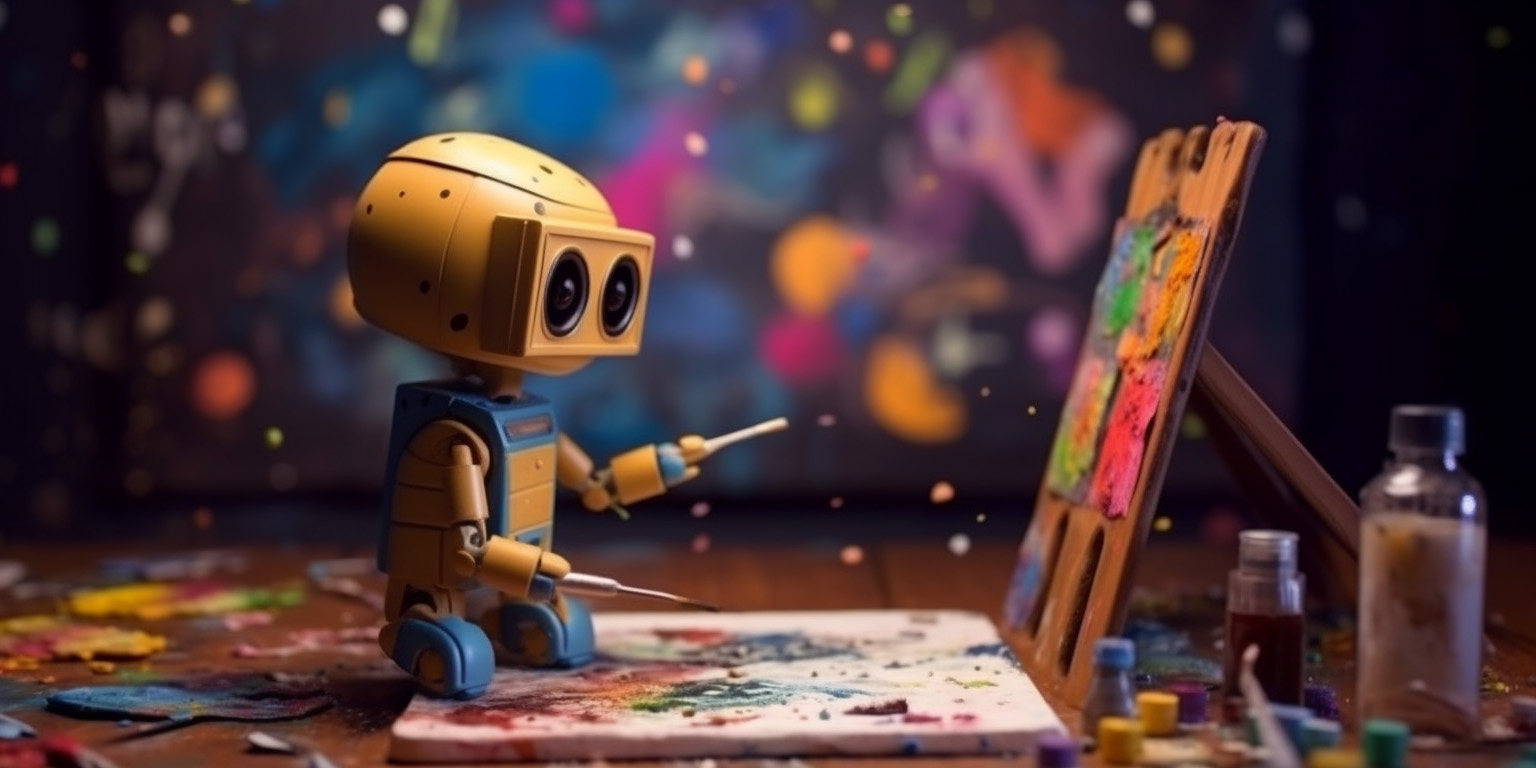AI in Graphic Design: Revolutionizing Creativity
Jun 25, 2023
The exponential growth of Artificial Intelligence (AI) in recent years has left few industries untouched, and graphic design is no exception. A realm once entirely dependent on human creativity and intricate craftsmanship is now witnessing a paradigm shift, with AI stepping in as a collaborator to the human designer. From automatic logo creation to design analysis, AI's capabilities have expanded the boundaries of what's possible. This blog post delves into the increasingly significant role of AI in graphic design, shedding light on how it's reshaping the industry landscape, the innovative AI tools and software changing the game, and the resultant benefits and trends. Whether you're a seasoned designer, a budding novice, or an interested observer, join me as I navigate this fascinating intersection of technology and creativity.

The Impact of AI on the Graphic Design Industry
- Automated design creation: AI-powered software is now capable of creating design elements like logos and banners. They use predefined algorithms and user input to generate designs that are both aesthetically pleasing and relevant. This technology has made design more accessible, as anyone with a basic understanding of these AI tools can generate professional-level designs.
- Efficient design analysis: By analyzing thousands of successful designs, AI can provide insights into design trends, popular color schemes, and effective layouts. It can even provide real-time feedback on the probable success of a design.
- Improved personalization: AI's data analysis capability allows for hyper-personalized designs tailored to individual user preferences. This means more engaging and effective designs that resonate with the audience.
- Speed and productivity: AI has automated many time-consuming tasks, allowing designers to focus more on the creative aspects of their work. This not only speeds up the design process but also improves overall productivity.
AI is revolutionizing the graphic design industry by accelerating design processes, enhancing creativity, and making design more accessible and personalized. However, it's important to remember that AI should be seen as a tool and not a replacement for human creativity and intuition. The human touch in design is irreplaceable and is what truly differentiates a good design from a great one.
How AI is Streamlining the Graphic Design Process
- Content generation: AI can generate elements of a design, such as background, icons, and even complete templates based on given inputs. This helps designers kickstart their design process.
- Color and font suggestions: AI can suggest color palettes and fonts based on a brand’s established aesthetic or on current design trends. This saves designers the time and effort of manual research.
- AI-powered image editing: Advanced AI algorithms have transformed the way we edit images. They can automatically enhance images, make smart object selections, remove backgrounds, and even provide style transfers to mimic famous artists or specific aesthetics. This significantly reduces the time and effort spent on manual editing.
These are just a few examples of how AI is making the design process more efficient and intuitive. By eliminating repetitive tasks and offering smart suggestions, AI is freeing designers to focus more on creativity and strategy. The power of AI in design lies in its ability to complement human ingenuity, not replace it.
Benefits and Real-World Examples of AI in Graphic Design
- Efficiency and speed: One of the most significant benefits of AI in graphic design is increased efficiency and speed. AI-powered tools can generate numerous design options in a matter of minutes, giving designers more creative freedom and reducing the time spent on repetitive tasks.
- Personalization: AI tools can analyze data to determine the preferences and behaviors of a brand's target audience, enabling designers to create personalized content that resonates more effectively with its intended audience.
- Accessibility: With AI tools, even those without professional design training can create visually appealing designs. This democratization of design allows small businesses or individuals with limited resources to compete with larger entities.
Here are some real-world examples of AI being used in graphic design:
- Adobe Sensei: Adobe Sensei, Adobe's AI and machine learning platform, has transformed the creative process. Features like Auto Lip-Sync in Adobe Character Animator and Content-Aware Fill in Photoshop are powered by AI, making tasks that were previously labor-intensive and time-consuming much simpler.
- Canva: Canva uses AI to suggest layouts, images, and graphics based on the designer's previous choices, enhancing the design process with an intuitive and personalized experience.
- ChatGPT: Although not specifically a graphic design tool, ChatGPT is an example of how AI can streamline creative workflows. As a language model, it can be used for generating creative text for marketing or design briefs, crafting social media posts, or even brainstorming ideas for a design project.
- Midjourney: Midjourney is an AI-driven image generation platform. It utilizes advanced machine learning algorithms to generate unique, high-quality images based on user-provided input. It enables users to quickly generate a multitude of visuals, significantly enhancing productivity and the speed of creative workflows.
From concept to completion, AI in graphic design is reshaping what it means to be a designer in the digital era. It offers opportunities to elevate our creativity, streamline processes, and enhance visual storytelling.
With AI tools like ChatGPT, Adobe Sensei, Canva, and Midjourney at your disposal, the sky is truly the limit. Dare to push the boundaries and redefine your creative process. Start experimenting with these tools today and let me know about your journey! Remember, every great innovation begins with a single step - and your step could be to leverage the power of AI in your graphic design work.


